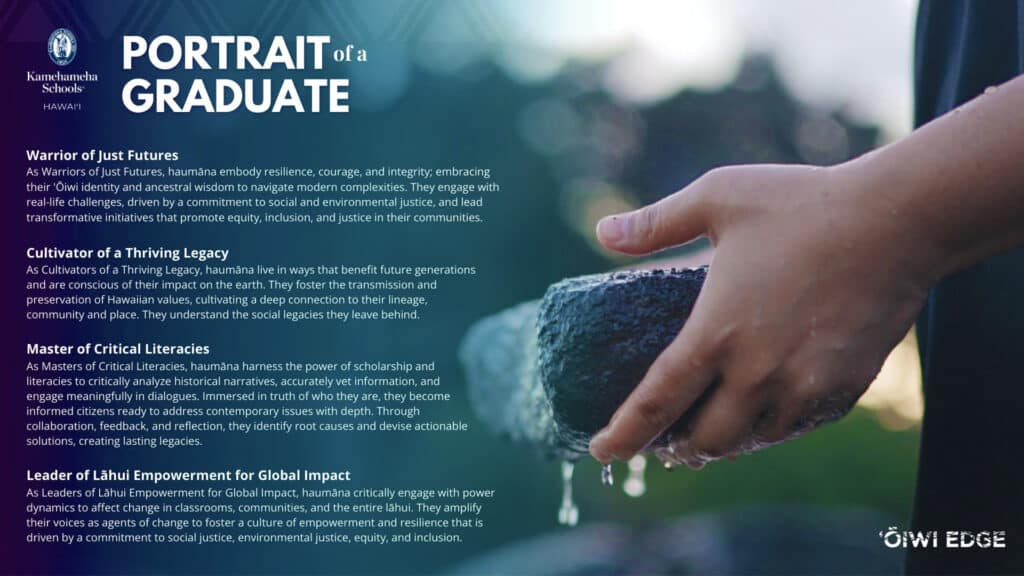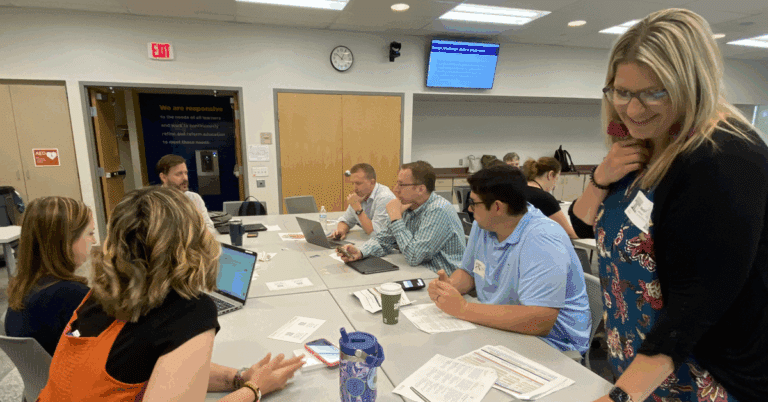How might educators see themselves not as sole creators of student achievement but as facilitators who recognize and build upon the assets students already possess?
During a recent educator professional learning day with Kamehameha Schools Hawai’i, we explored the idea of He lani ke keiki or “child as chief”—a concept deeply rooted in cultural wisdom and adaptable to many contexts.
In many cultures, traditional leadership roles, such as chiefs inherit their responsibilities, are inherited regardless of age. Likewise, students arrive at school with inherited knowledge from their families and communities. Acknowledging this inherited knowledge disrupts the idea that schools manufacture success from scratch. The “child as chief” challenges us to reconsider how we view students: not as empty vessels to be filled but as individuals who arrive in our classrooms already rich with knowledge, history and capability.
One of the key challenges in traditional schooling is that students often feel the need to leave parts of themselves at the school gate. Many Indigenous scholars and educators working with students from historically marginalized communities have observed this phenomenon. Students from challenging backgrounds, including those living in poverty, are given opportunities at prestigious schools, but these spaces often require them to assimilate rather than integrate their full selves. This detachment can weaken long-term success, as students begin to see school as separate from their lived reality rather than a meaningful part of it.
For many Indigenous and Hawaiian students, identity is deeply tied to genealogy (moʻokūʻauhau) and place (‘āina). These connections shape who they are and what they excel at. Families pass down knowledge about agriculture, fishing, hunting and other essential skills. Many students may struggle with conventional academic tasks but demonstrate extraordinary abilities in real-world applications. If education does not acknowledge these strengths, it risks alienating students from their potential. By creating learning environments that honor cultural identity, we empower students to engage with their education in a relevant and authentic way.
What would embracing a broader, community-driven definition of success look like? How could we move toward a model that values non-closure—an ongoing, evolving understanding of achievement that includes cultural identity, personal strengths and lifelong learning? Like many of our partner learning communities, Kamekameha Schools developed a Portrait of a Graduate to reflect what they value:
- Warrior of Just Futures
- Cultivator of a Thriving Legacy
- Master of Critical Literacy
- Leader of Lāhui Empowerment for Global Impact
As educators, we must recognize that we are teaching the next generation of leaders—chiefs in their own right. By shifting our perspective, we honor our students’ identities and knowledge and create a more just and effective educational system.
What decisions are you making for students that they could be making for themselves?






